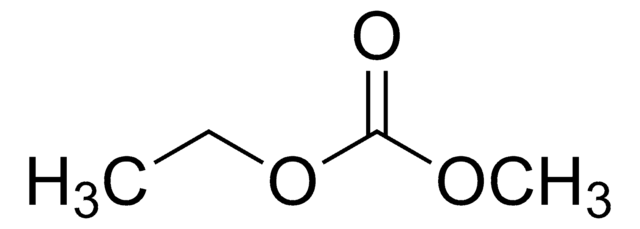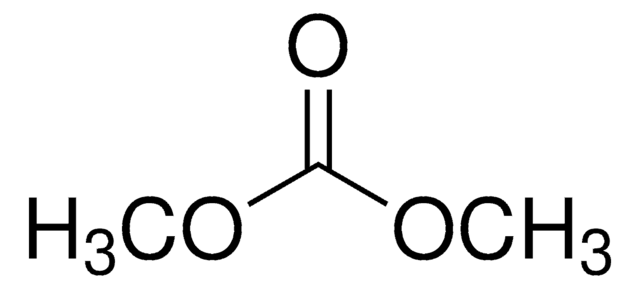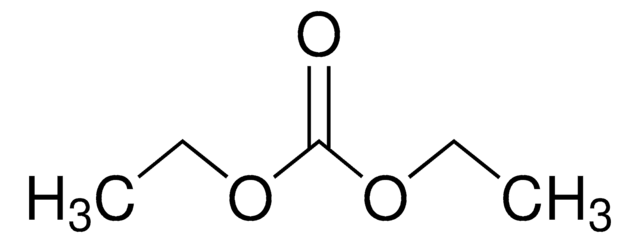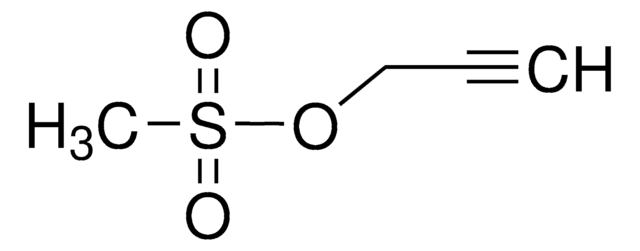Kluczowe dokumenty
901686
Fluoroethylene carbonate
battery grade, ≥99%, acid <200 ppm, anhydrous
Synonim(y):
4-Fluoro-1,3-dioxolan-2-one, FEC
About This Item
Polecane produkty
klasa czystości
anhydrous
battery grade
Poziom jakości
Próba
≥99%
Formularz
liquid
zanieczyszczenia
≤100 ppm H2O
≤200 ppm acid
bp
212 °C
mp
18-23 °C
gęstość
1.485 g/cm3
Zastosowanie
battery manufacturing
ciąg SMILES
FC1COC(=O)O1
InChI
1S/C3H3FO3/c4-2-1-6-3(5)7-2/h2H,1H2
Klucz InChI
SBLRHMKNNHXPHG-UHFFFAOYSA-N
Szukasz podobnych produktów? Odwiedź Przewodnik dotyczący porównywania produktów
Powiązane kategorie
Opis ogólny
Zastosowanie
Cechy i korzyści
✔ Improves Battery Safety
✔ Enhances Battery Performance
✔ Versatile Electrode Compatibility
Przestroga
- These electrolyte solutions have extremely low water content; please handle under inert and moisture free environment (glove box).
- Keep containers tightly closed. Keep away from heat and ignition sources. Store in a cool and dry place. Avoid storing together with oxidizers.
Informacje prawne
produkt powiązany
Hasło ostrzegawcze
Warning
Zwroty wskazujące rodzaj zagrożenia
Zwroty wskazujące środki ostrożności
Klasyfikacja zagrożeń
Acute Tox. 4 Oral - Eye Irrit. 2 - Skin Irrit. 2 - Skin Sens. 1
Kod klasy składowania
10 - Combustible liquids
Klasa zagrożenia wodnego (WGK)
WGK 1
Temperatura zapłonu (°F)
Not applicable
Temperatura zapłonu (°C)
Not applicable
Wybierz jedną z najnowszych wersji:
Certyfikaty analizy (CoA)
Nie widzisz odpowiedniej wersji?
Jeśli potrzebujesz konkretnej wersji, możesz wyszukać konkretny certyfikat według numeru partii lub serii.
Masz już ten produkt?
Dokumenty związane z niedawno zakupionymi produktami zostały zamieszczone w Bibliotece dokumentów.
Klienci oglądali również te produkty
Powiązane treści
Batteries, fuel cells, and supercapacitors rely on electrochemical energy production. Understand their operation and electron/ion transport separation.
Baterie, ogniwa paliwowe i superkondensatory opierają się na elektrochemicznym wytwarzaniu energii. Zrozumienie ich działania i separacji transportu elektronów/jonów.
Baterie, ogniwa paliwowe i superkondensatory opierają się na elektrochemicznym wytwarzaniu energii. Zrozumienie ich działania i separacji transportu elektronów/jonów.
Global Trade Item Number
| SKU | GTIN |
|---|---|
| 901686-50G | 4061835559985 |
| 901686-10G | 4061835508266 |
| 901686-1G | 4065272645232 |
Nasz zespół naukowców ma doświadczenie we wszystkich obszarach badań, w tym w naukach przyrodniczych, materiałoznawstwie, syntezie chemicznej, chromatografii, analityce i wielu innych dziedzinach.
Skontaktuj się z zespołem ds. pomocy technicznej













